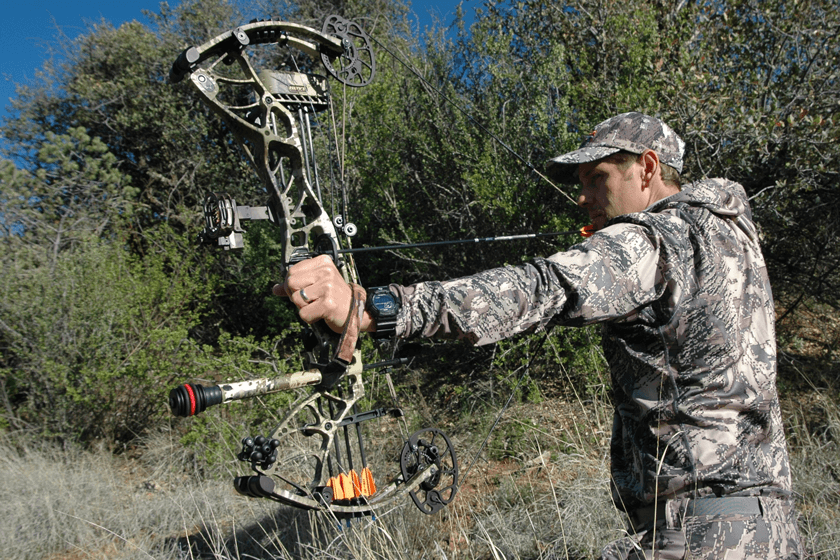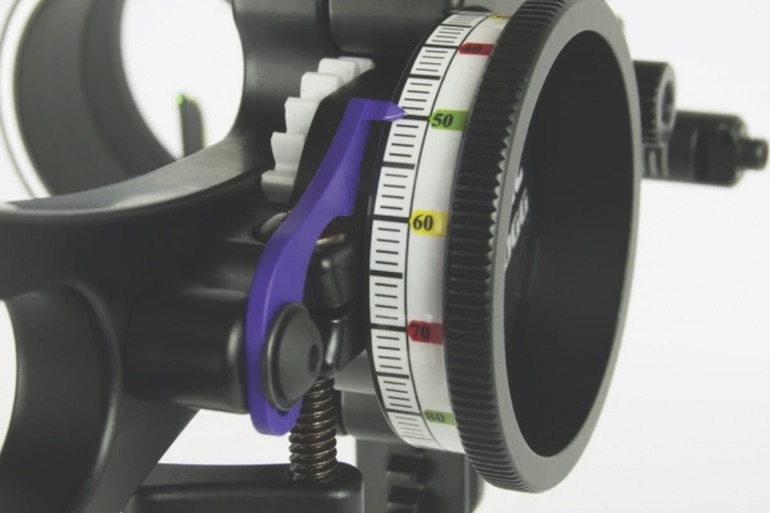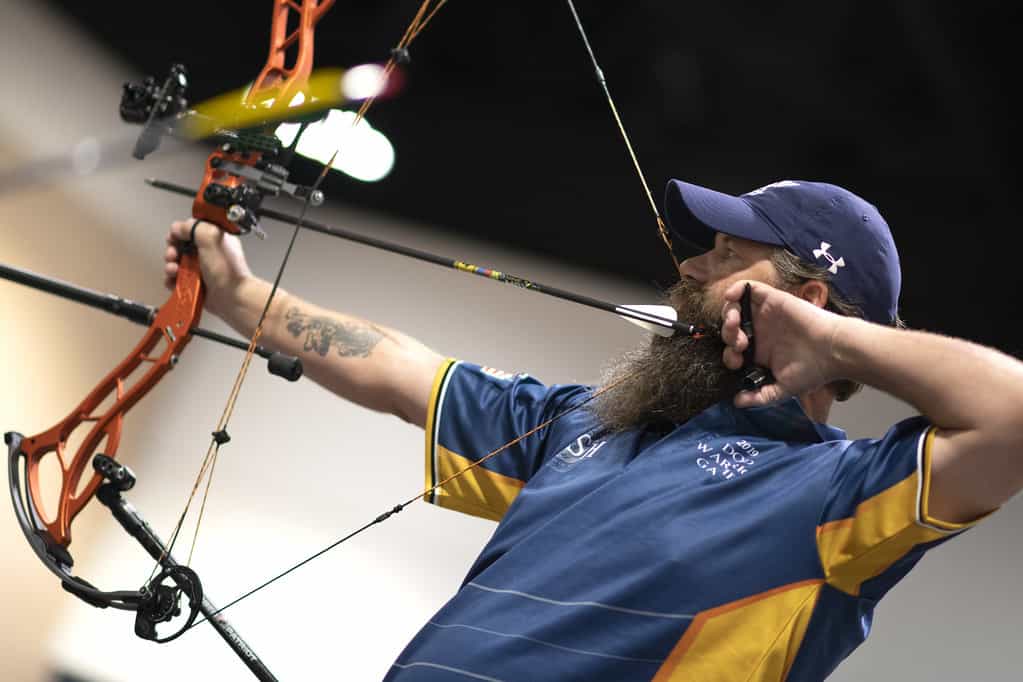Yes, string walking is allowed in barebow archery. Barebow archers can use the technique of string walking to adjust the vertical position of their arrow on the target.
This technique involves changing the position of the hand along the bowstring, which allows for precision in aiming and can be beneficial for shooting at varying distances. String walking is a popular method used by barebow archers to effectively shoot arrows at different ranges without the need for a sight or other aiming aids.
It requires skill and practice to master, but it provides a versatile and effective approach to shooting in barebow archery.
Understanding The Barebow Archery Style
Understanding the barebow archery style involves grasping its definition and characteristics, as well as the equipment used. Barebow is a form of archery that emphasizes simplicity and skill. It does not include any additional sights, stabilizers, or other advanced accessories.
Instead, it relies on the archer’s ability to judge distance and aim using instinct. The basic equipment used in barebow archery typically includes a recurve bow, arrows, and a quiver. Additionally, the bow may have a simple sight window and a string, but no other additional features are allowed.
This style of archery places a strong emphasis on technique and form, requiring steady hand-eye coordination and focused concentration. Mastering the essential components and features of a barebow is crucial for excelling in this challenging and rewarding archery style.
The Role Of String Walking In Barebow Archery
String walking is a technique used in barebow archery, which has its own role and significance. It involves the archer altering the position of their hand on the string to adjust for different distances. This technique directly impacts aiming and precision in barebow archery.
By changing the hand position on the string, the archer is able to change the vertical position of the arrow on the target. This allows for adjustments without the need for sight pins or other aiming aids. However, string walking also comes with its own set of advantages and disadvantages.
On one hand, it provides greater flexibility and the ability to shoot accurately at various distances. On the other hand, it requires a lot of practice to master and can be more challenging for beginners. Overall, string walking is an interesting and debated technique in the world of barebow archery.
The Rules And Regulations Around String Walking
String walking, a technique used in barebow archery, raises questions about its legality in competitions. Archery associations have differing policies regarding string walking, so understanding the rules is crucial. While some associations permit it, others prohibit this controversial technique. The debate surrounding string walking revolves around its potential impact on fairness and traditional shooting styles.
Despite the controversy, many archers find string walking to be an effective way to improve accuracy by adjusting the distance between the bow and arrow. Aspiring barebow archers must familiarize themselves with the rules and regulations of the specific association they compete in to determine whether string walking is allowed.
Being aware of the policies and engaging in the ongoing dialogue can help shape the future of barebow archery.
Perfecting Your Technique With String Walking
String walking is a technique commonly used in the world of barebow archery. It involves adjusting your aim and anchor points to achieve better accuracy. To master this technique, it is important to practice and refine your skills. Start by finding the right balance between your anchor point and aiming point.
Experiment with different positions along the string to find what works best for you. Additionally, pay attention to your form and focus on consistent execution. Regular practice and repetition will help you develop muscle memory and improve your precision. Remember, perfecting your string walking technique takes time and dedication, so be patient and keep practicing.
Enhancing Accuracy Through Equipment Choices
String walking, a technique used in barebow archery, has been a source of contention among archers. When it comes to enhancing accuracy, choosing the right equipment is crucial. This includes selecting an ideal bow that allows for string walking. Stabilizers, sights, and other accessories play a vital role in achieving precision and consistency in shooting.
Additionally, arrow selection and tuning are paramount for maximizing accuracy in barebow. By carefully considering these equipment choices and techniques, archers can improve their aim and hit the target with precision. The ability to adjust the position of the fingers along the string brings a new dimension to barebow archery, enabling archers to explore different aiming methods and find what works best for them in terms of accuracy and consistency.
Choose your equipment wisely and practice diligently to excel in string walking.
Training Methods For Precision Shooting
String walking is a common technique used in barebow archery to achieve precision shooting. For building a focused practice routine, it is essential to incorporate mental strategies and visualization techniques. Visualization helps in creating a mental image of the target and improving shot execution.
Additionally, strength training and physical fitness play a vital role in enhancing accuracy. Building upper body strength and improving core stability can greatly benefit archers. Moreover, engaging in regular cardio exercises helps in maintaining endurance during competitions. By combining these training methods, archers can improve their accuracy and performance in barebow shooting.
Technological Developments For String Walking
String walking is a popular technique used in barebow archery. Technological advancements have paved the way for innovative bow designs and features that enhance string walking. Archers now have access to novel accessories and tools that aid in achieving precision while string walking.
These advancements also include emerging technologies that are shaping the future of barebow shooting. With these developments, archers can fine-tune their aim and improve their overall performance. The combination of these cutting-edge advancements and the skillful use of string walking techniques allows archers to excel in the sport.
Whether it’s utilizing specialized accessories or taking advantage of advanced bow designs, the possibilities for enhancing barebow string walking are limitless. Archers can now push the boundaries and achieve new levels of accuracy and success in their shooting endeavors.
Competitive Success Stories With String Walking
String walking is a technique that is commonly used in competitive barebow archery. Many top archers have found success using this method to achieve precision and accuracy. Through interviews with these accomplished archers, we can gain insight into their achievements and records.
By examining the impact of string walking on the sport, we can see how it has changed the dynamics of competitive barebow archery. This technique allows archers to adjust their aiming point by varying the distance they anchor the string.
It requires skill and practice to master, but it has proven to be effective for many competitors. With its increasing popularity, it raises the question of whether string walking should be allowed in professional competitions. The ongoing debate surrounding this topic adds another layer of interest to the sport, as archers aim to balance tradition and innovation in pursuit of success.
Pushing The Boundaries Of Barebow Archery
Pushing the boundaries of barebow archery involves experimenting with alternative aiming methods. By exploring the limits of precision without string walking, archers can unlock new possibilities and potentially revolutionize the techniques used in barebow archery. This evolution in aiming can lead to greater accuracy and innovation in the sport.
With careful practice and dedication, archers can challenge the norms and seek out new ways to improve their shooting skills without relying on traditional methods. By embracing alternative aiming techniques, barebow archers can push the limits of their sport, paving the way for future advancements and enhancing their overall performance on the field.
So, is string walking allowed in barebow? Let’s explore the potential answers together.
Frequently Asked Questions For Is String Walking Allowed In Barebow?
Can String Walking Be Used In Barebow Archery?
String walking is a technique where the archer purposely moves their hand along the bowstring to adjust aim.
What Are The Advantages Of String Walking In Barebow?
String walking allows for precise aiming at various distances without the need for a sight or scope.
Are There Any Disadvantages To Using String Walking In Barebow?
Using string walking can take time to master and may require adjustments to equipment and shooting form.
Conclusion
In the world of barebow archery, the use of string walking has been a controversial topic. While some argue that it goes against the traditional spirit of shooting, others believe it adds a new dimension of skill to the sport.
Despite the debates, it is important to note that string walking is indeed allowed in barebow competitions. This technique allows archers to adjust their aiming point by moving their fingers along the bowstring, which can be advantageous when shooting at different distances.
However, mastering string walking requires practice and precision. Archers must develop a deep understanding of their equipment and learn to make subtle adjustments while maintaining consistent form. Ultimately, the decision to use string walking in barebow is up to each individual archer.
Whether one chooses to embrace this technique or stick to more traditional methods, the goal remains the same – to become the best archer they can be.

General Manager & Auditorial Head.
Killian Jake is a World Sports Traveler and hobbyist sports lover. By exploring different sorts of playing modules like indoor, outdoor, and many more. As for professionalism and writing, it’s helpful to give you the right suggestions on different games and sports.




